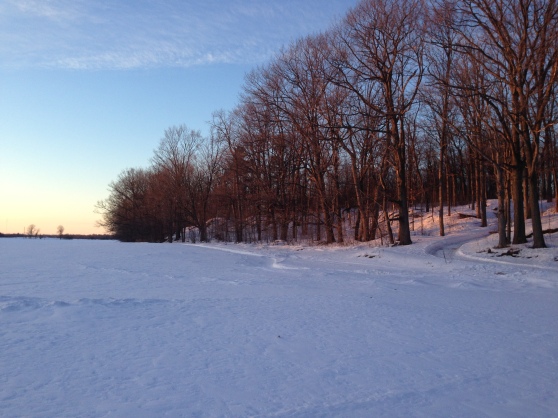I’ve been getting all of my ducks in a row these past few weeks. Since we tapped the trees 2 weeks ago, I have been stacking wood, cleaning tools, organizing equipment…and waiting for the sap to flow. And waiting some more. Since that week of sunny days with above average highs, the temperatures have dropped again (and I dare say plummeted last night to -15° Celsius with a wind-chill of -25°Celcius). Needless to say I’m antsy; I want to have a boiling day! I’ve been keeping myself occupied by double-checking that all of our equipment is in order, and doing beekeeping research (a story for another day). In particular we’ve been fine-tuning our sap-transportation process. Since the RTV has mini-caterpillar tracks on it meant for getting around in the bush now, it’s inefficient to be driving it back and forth to the house to empty the 50 gallon collecting tank out. I purchased a bigger tank (over twice the size at 125 gal) this winter that we will situate in the truck bed instead. So we will be dumping the buckets into the RTV tank, pumping sap from the RTV tank to the one in the truck, driving the truck to the sugar shack and then pumping the sap from the truck tank to the holding tank outside the sugar shack. We mulled over the best way to do this given the equipment that we already own and settled on purchasing an additional pump to leave in the second collecting tank for the season. Getting the proper sized fittings and tubing and quick connects has been a trial. At Canadian Tire and then at Home Depot we went in search for the correctly sized brass fittings – no dice. They had male 1/2 inch converter for garden hose, and a female 3/4 inch for vinyl tubing. Plastic and pvc but not brass. I reined in my compulsion to pull my hair out in frustration. The only purchase that resulted from that excursion was garden seeds for pretty flowers. We finally accepted that the most reasonable and economical solution is to duplicate the system that we already have instead of buying additional converters to fit the extra tube that we have lying around. Meaning, we simply need to buy more tubing with the right inner diameter. Big sigh.
Ducks! Attennnnntion! And waddle!



